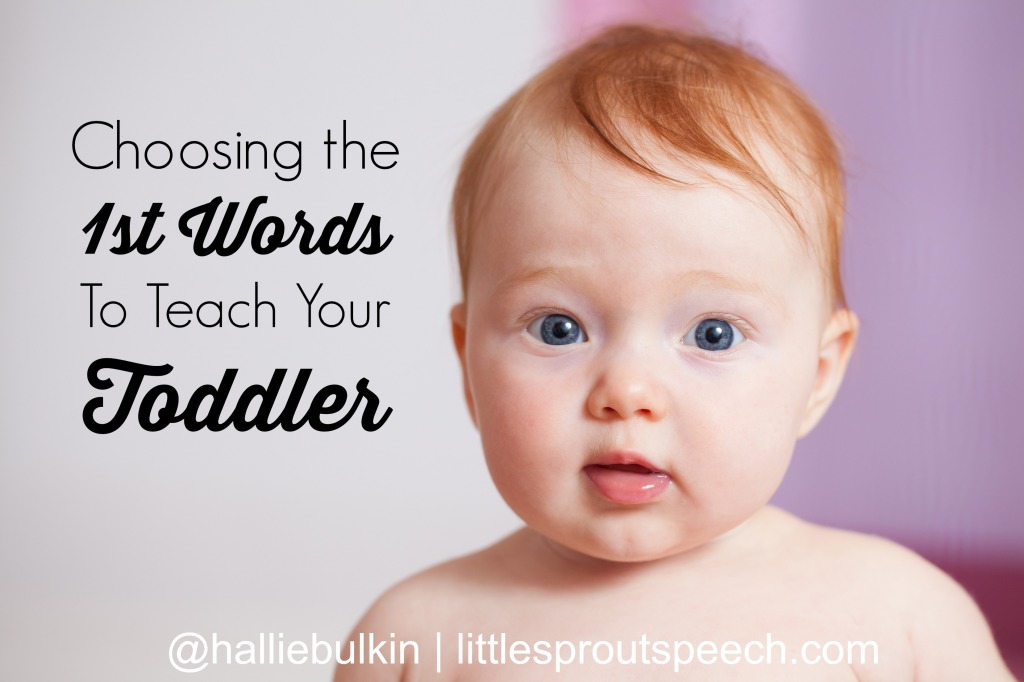
Teaching Early Words To A Language-Delayed Toddler
By Hallie Bulkin
I was chatting with our intern yesterday and she asked a great question! She asked,
“What are the first words you teach a young child?”
[Note: In this scenario a young client generally refers to a child 18 months to 3 years who is not yet talking
or who is in the early stages of learning to communicate through words.]
This is a great question as there are many factors that play a role in the words that I choose to teach a child when we are beginning our sessions and therapeutic relationship together.
There are three main factors that always drive my decision:
- Start with words containing early sounds. The first sounds a child can make are the sounds that appear on the lips: p, b, m. These sounds are easier since they are more visual as they appear on the lips. These words may include Up, baa, pop, buh-buh (bubbles), mmm, ma, more, etc.
- Work on single syllable words that contain the early sounds first. (There is always time to introduce 2 and 3 syllable words later.) Generally use those words with a consonant-vowel format (CV; e.g., up, in, on) before expecting the final consonant be added (e.g., “pop”, “bop”, “map”, etc.).
- Last but not least, work on words that have meaning and that are highly motivating to the child (e.g., “mama”, “dada”, “bubble”, “woof-woof”, the child’s name [even if the sounds are not early sounds], etc.).
While these strategies are geared toward children with speech and language delays to begin learning language, it can be used with children regardless of their age if they are just learning to use language to communicate verbally.
Love,
Hallie
This blog post first appeared on thedcladies.com on November 17, 2014.
